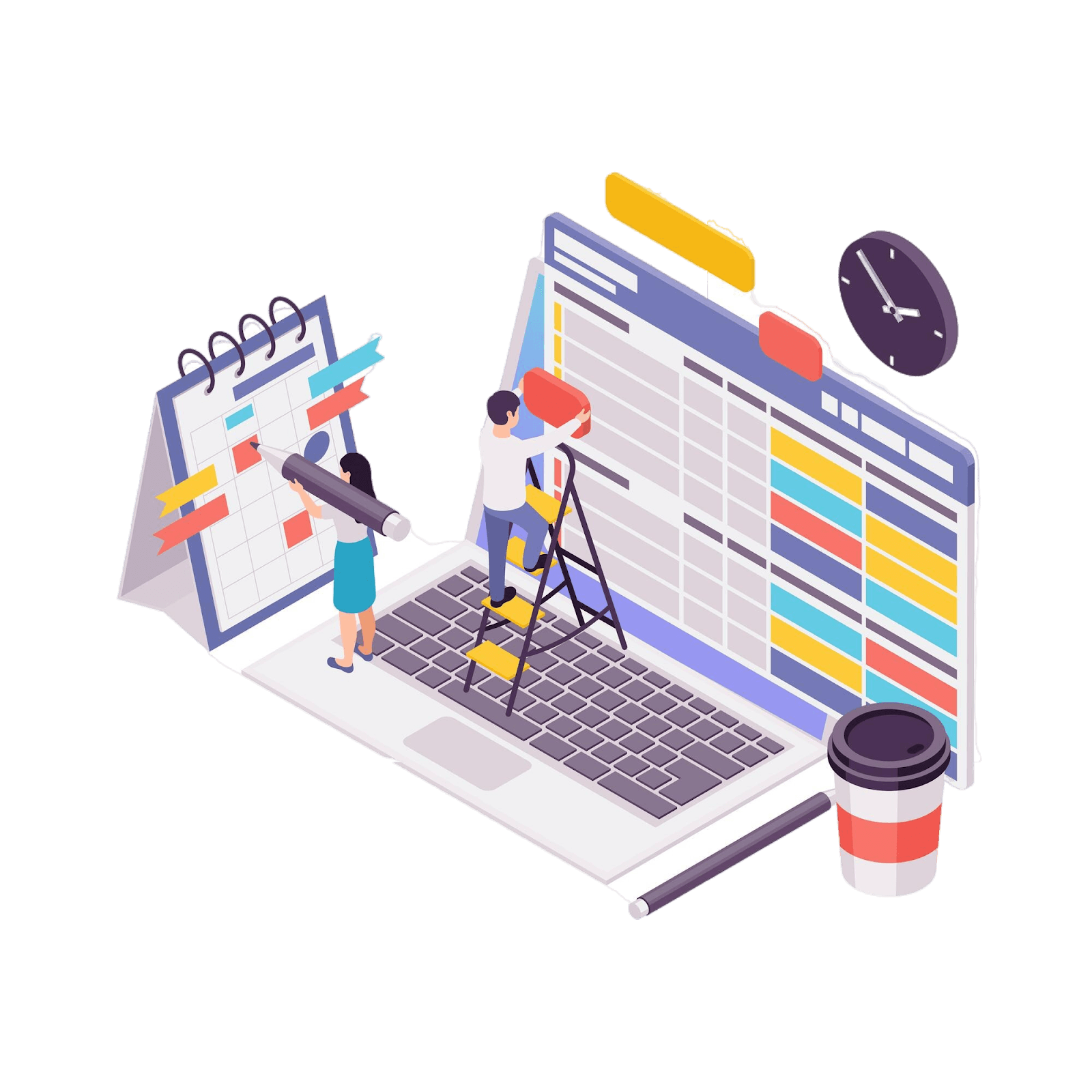
Factors to Consider Before Choosing A Task-Tracking Software
Effective task tracking is essential for maintaining productivity and successfully managing projects. It helps teams stay organized, on schedule, and aligned with their goals. However, choosing the right task-tracking software can be a challenge with the abundance of options available in the market.
In this blog post, we’ll guide you through the key factors to consider when evaluating and selecting the most suitable task-tracking software for your needs.
By the end of this article, you'll be equipped with the knowledge to make an informed decision that will boost your team's efficiency and project outcomes.
What is a Task Tracking Software?

A task tracking software, also known as a project management or work management tool, is one of the most-used team collaboration software that helps individuals and teams manage and monitor the progress of various tasks, projects, and workflows.
The primary purpose of task-tracking software is to provide a centralized and organized system for planning, assigning, and tracking task completion.
These tools typically offer a range of features and functionalities to support effective task management, including Task Creation and Assignment, Project and Team Collaboration, Progress Tracking and Monitoring, Reporting and Analytics, and Integrations.
Key Factors to Consider When Choosing a Task Tracking Software

By now, you are probably already familiar with what a task-tracking software is and are already considering getting one for your business.
But not so fast! Before you hit the purchase button, here are some key factors you need to consider first:
Ease of Use
The task-tracking software you choose should have a user-friendly interface and intuitive navigation. This ensures a smooth learning curve for your team, allowing them to quickly become proficient in using the tool and minimizing the time spent on training.
For virtual teams, there are effective task management strategies that’s easy to implement even for first time business owners.
Functionality
Aside from being easy to use, make sure to also look for a task-tracking solution that offers a comprehensive set of features to meet your needs. Try tools with Generative AI capabilities including:
Deadlines and due date management
Progress tracking and status updates
Reporting and analytics capabilities
Look at practical service automation examples in business so you’’ll have an idea of the functionalities that may be useful for your business processes.
Integrations
Consider how the task-tracking software integrates with your team's other tools and software, such as project management, communication, and file-sharing platforms. Make sure that before buying, you have an idea of how real-time collaboration software work.
Seamless integrations can help streamline your workflows and eliminate the need for manual data transfer between systems.
Scalability
You might not be considering this now, but as your team and projects grow, the task-tracking software should be able to scale accordingly. Make sure that the solution can accommodate an increasing number of users, tasks, and projects without compromising its performance or functionality. Try looking for software with knowledge base management features to hit all the right feature you need.
Security and Privacy
Evaluate the task-tracking software's security and privacy features, such as data encryption, user access controls, and compliance with industry regulations. Protecting your team's sensitive information is crucial, especially if you're handling confidential or proprietary data.
Cost and Pricing
Assessing the pricing models and plans offered by the task-tracking software providers is another important thing to look into. Consider not only the initial costs but also any hidden fees or additional costs that may arise as your usage or needs change over time. Determine whether the investment aligns with your budget and provides value for your money.
Consider Free Knowledge Base Software to get an idea of how this software works before committing.
Evaluate Task Tracking Software Options
Ultimately, to select the right task-tracking software, start by clearly identifying your team's specific needs and requirements. This will help you narrow down the options and focus your research on the solutions that best fit your criteria.
Next, explore and compare the features, integrations, and pricing of popular task-tracking tools. Many of the best collaboration software offer free trials or demo versions, which allows you to test the software firsthand and evaluate its suitability for your workflow.
Pros and Cons of Having a Task Tracking Software
Here are the key pros and cons of using a task tracking software:
Pros:
Improved Productivity- Centralized task management and visibility help teams stay organized and focused. Automated reminders and notifications prevent tasks from falling through the cracks.
Enhanced Collaboration- Shared task lists, comments, and file sharing facilitate team collaboration. This improves communication and accountability around task assignments and deadlines. Managers can also monitor team workloads and distribute tasks more efficiently.
Better Visibility and Reporting- Detailed task and project analytics provide valuable insights for performance optimization. Customizable dashboards and reports help manage and communicate project status.
Scalability and Flexibility- Many task-tracking tools can accommodate growing teams and increasingly complex projects. The ability to customize workflows, settings, and integrations to match evolving business needs.
Time and Cost Savings- Streamlined processes and reduced administrative overhead increase efficiency. It also reduces the need for manual tracking and status updates, which has the potential to save more.
Cons:
Initial Setup and Learning Curve- Introducing a new task-tracking software may require team onboarding and training time, which can be time-consuming.
Potential for Micromanagement- Overly detailed task tracking and excessive monitoring can create a sense of mistrust and reduced autonomy.
Subscription Costs- Ongoing subscription fees for cloud-based or enterprise-level task-tracking software can add to operational costs. Free or basic versions may have limited functionality, requiring an upgrade to access essential features.
Data Security and Privacy Concerns- Storing sensitive project data and information in a third-party cloud-based platform may raise security and privacy concerns.
Dependency on Technology- Reliance on task-tracking software can make teams vulnerable to technical issues or system outages. Backup and disaster recovery plans should be in place to mitigate the impact of technology failures.
The decision to implement task-tracking software should be based on a thorough evaluation of your team's needs, workflow requirements, and potential benefits versus drawbacks. By carefully considering these pros and cons, you can determine if a task-tracking tool fits your organization.
Conclusion
Choosing the right task-tracking software is a crucial decision that can have a significant impact on your team's productivity and project outcomes. By carefully considering the factors outlined in this blog post, you can make an informed choice that will streamline your team's processes, improve collaboration, and contribute to the overall success of your projects.
Remember, the right task-tracking software best meets your specific needs and empowers your team to work more efficiently and effectively. Take the time to evaluate your options, and you'll be well on your way to finding the perfect solution for your organization.
FAQs
Does Google have a task tracker?
Yes, Google offers a free task tracker called Google Tasks. It lets you create to-do lists, set due dates, and access them from any device. It even integrates with Gmail and Calendar for a more unified workflow.
Does Google Tasks still exist?
Yes, Google Tasks is alive and well! In fact, Google Assistant and Calendar reminders were recently merged into Google Tasks, making it your one-stop shop for managing to-dos and staying on track.
Can you automate Google Tasks?
Google Tasks itself doesn't offer built-in automation, but you can connect it with other services like Zapier or IFTTT. These tools let you trigger tasks in Google Tasks based on events in other apps, like adding a to-do when a calendar event appears.
How do I track my daily work?
There are two main ways to track your daily work: use a to-do list app to manage tasks and deadlines or keep a time log to see how much time you spend on different activities.
